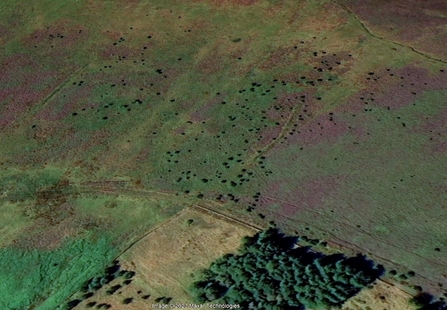
Google Earth Pro
Sitka Spruce is the most common rainforest tree of the giant North American temperate rainforests; its their equivalent of our oak. Growing up to 100m high and living up to 700 years they are one of the planet's true giants.
They have been commercially grown for their timber on the Isle of Man for over 100 years and are planted over hundreds of acres of Manx hills to become the most common tree on the Island. Their attraction to foresters is they grow on poor soils and exposed sites; they grow straight and fast; and their timber is strong but lightweight. A typical commercial tree will be grown for 40-50 years before it is felled for timber.




